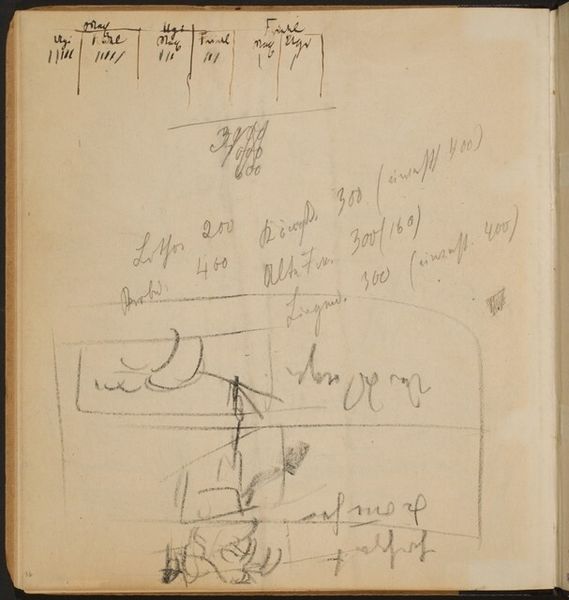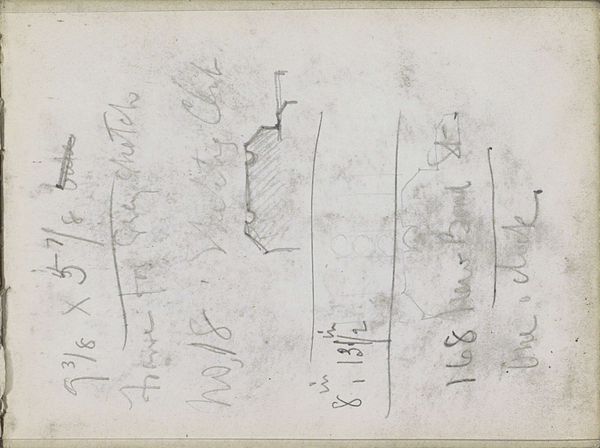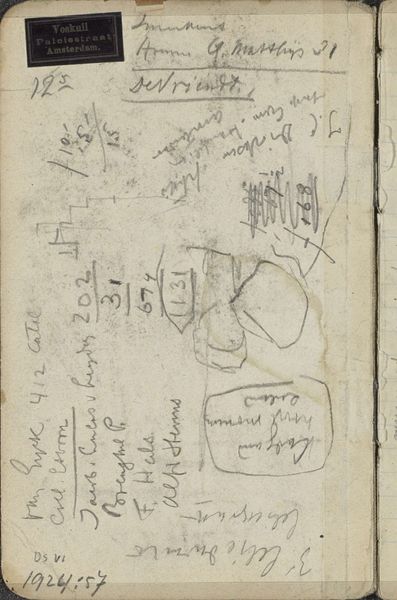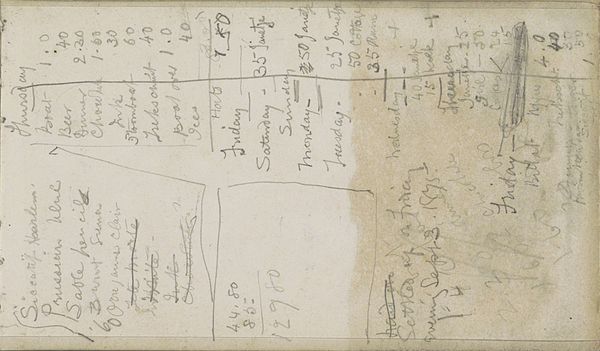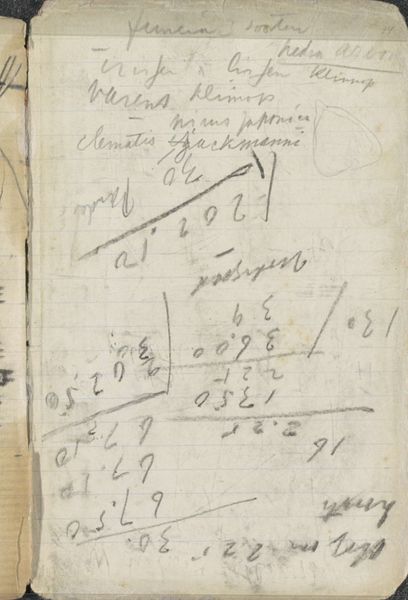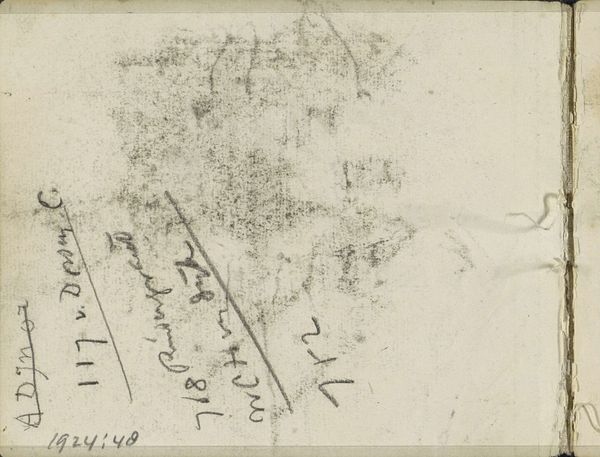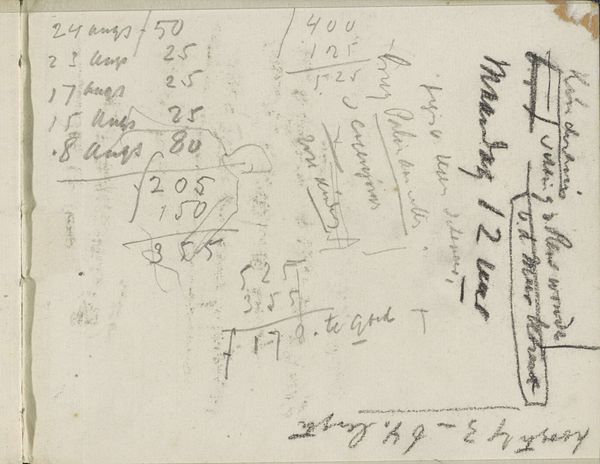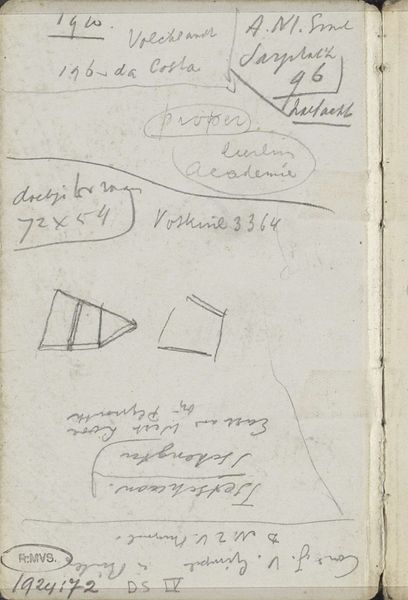
Copyright: Rijks Museum: Open Domain
Curator: Looking at Willem Witsen’s “Annotaties,” made around 1888 to 1891, immediately evokes a feeling of…well, organised chaos, almost. Editor: It strikes me as a palimpsest of sorts. The paper itself tells a story of its making – the graphite smudges, the stains, all that labor of calculation! What kind of paper are we talking about here? Curator: The piece is graphite on paper. You see the dense calculations crowding the surface on the right side? In counterpoint there's a lot of vacant space to the left. The sum total feels deeply introspective. Editor: Definitely. We're getting a glimpse into Witsen's process, seeing the very arithmetic underpinning, say, a composition. How does the materiality of this relate to his more well-known prints and paintings? Is he using the material almost like an extension of his mind? Curator: I feel he is! Knowing his work, you'd be familiar with how he often explores quiet moments, using light to give everyday things a somewhat theatrical touch. Maybe that "ordinariness" is precisely what attracts him: to transform and celebrate everyday, commonplace material, that is cheap in origin, to find the unique beauty within them? I wonder if that might mirror an element within the broader aesthetic movements happening at that point in art history? Editor: Absolutely. It disrupts traditional hierarchies – this isn’t a precious material meant for display in a salon. It's a working document. And placing these private mathematical annotations on par with, for example, carefully crafted etchings… that’s quite radical for the period. Curator: And yet, look how deliberately the pencil strokes are crafted and repeated to get what the artist intended to create; despite them being simply what looks like annotations, there's also something rather beautiful about seeing all that work behind this art, with Witsen turning something so mundane into a delicate visual creation that speaks of a different world, maybe an unseen perspective. Editor: The labor certainly sings out from the piece, both literal calculation and artistic labor. It underscores that the final ‘art object’ emerges from layers of often unseen material and intellectual investment. Seeing those layers made visible can only enrich the work itself. Curator: For me it’s that combination of a mundane nature but, in its very being, manages to take our mind on a fascinating visual quest, which reminds me again how beautiful the intersection between the ordinary and unique can be. Editor: Exactly, “Annotaties” gives voice to the hidden material foundations on which creativity builds its most striking work.
Comments
No comments
Be the first to comment and join the conversation on the ultimate creative platform.

